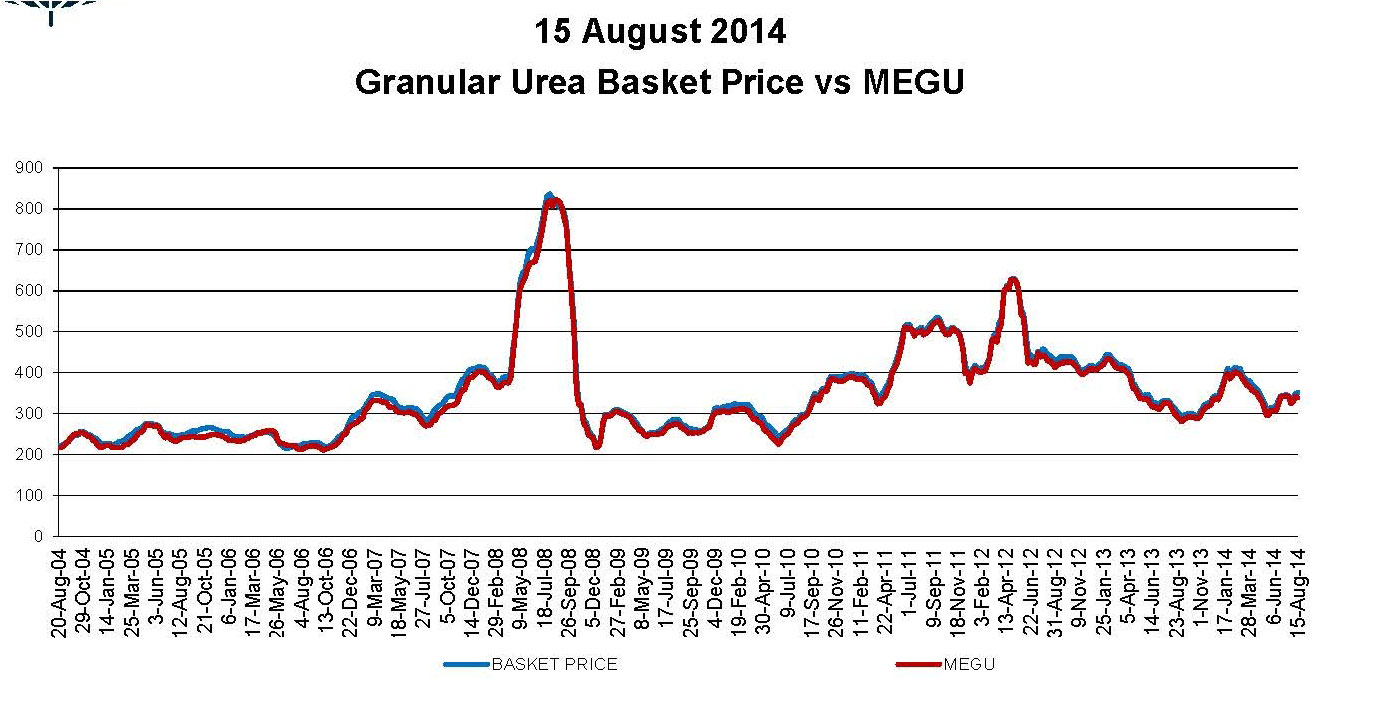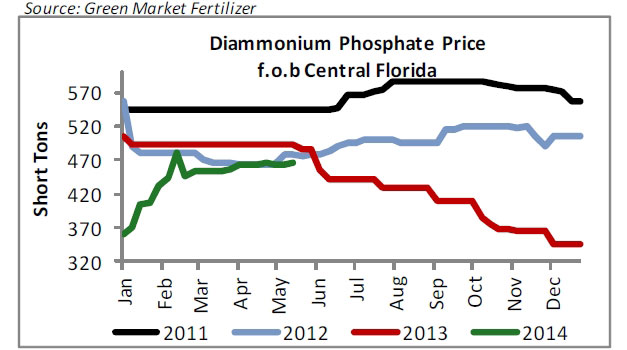By Gary Hergert, Tim Shaver, Charles Shapiro, Charles Wortmann and Richard Ferguson
Wheat harvest is complete and it's time to think about fall fertilization and next year's fertilizer needs. With adequate stored soil moisture in much of the winter wheat fallow areas in Nebraska, yield potential for next year's crop should be good. Much of southwest and south central Nebraska, however, is still abnormally dry or in moderate drought, according to the US Drought Monitor. In much of western Nebraska, some areas have not received rain in six weeks while other areas have had 2- to 3-inch rains from recent monsoon moisture. Wheat prices have seen a dramatic drop since this spring.
Fertilizer prices decreased early in summer but have recently increased due to international tensions and concerns about supply and rail delivery.
Because of the 2012 flash drought, much of the 2013 wheat crop had reduced yields. Those fields will be planted to wheat in fall 2014 for the 2015 crop. Due to yield and moisture variability, these fields should be soil sampled to at least a 3-foot level to determine residual nitrate to help adjust nitrogen recommendations. Nitrate should be sampled before each wheat crop. (See Guidelines for Soil Sampling, NebGuide G1740.)
Nitrogen
Urea prices have been up, down, then up the last year (Figure 1). Because of dealer supply and availability, there is considerable price variation across Nebraska, which means this will be a year to comparison shop.
 (Click image to open full-size chart in a New Window.)
(Click image to open full-size chart in a New Window.)
Information from your soil tests plus fertilizer prices and expected selling price for your wheat are used to calculate both nitrogen and phosphorus recommendations. (See Fertilizing Winter Wheat, UNL EC143). With somewhat uncertain wheat and fertilizer prices, a good approach might be to apply a small amount of nitrogen (20 pounds per acre) this fall between row-applied or broadcast nitrogen. Use soil test results and watch fertilizer and wheat prices over the fall and winter to determine how much additional nitrogen might be applied next spring before jointing. It is still profitable to apply nitrogen based on a range of current prices for wheat and nitrogen (Table 1).
Phosphorus
|
||||||||||||||||||||||||||||||||||||
Phosphorus prices for 18-46-0 (DAP) dropped considerably during 2013 and rebounded somewhat during 2014 but are still in an affordable range (Figure 2).
Applying phosphate is also still profitable. Nebraska data shows up to a 20 bushels per acre increase when applying phosphorus to low soil test levels, and up to a 10 bushels per acre increase when applying to medium phosphorus soils. The most profitable rate depends on the source, wheat and fertilizer prices, soil pH, and the method of application.
Row or dual-applied phosphorus is a more efficient application method than broadcast. Newer ammonia applicators with coulters allow narrower application (15 inches) and also operate at shallower depths (5 to 7 inches), greatly reducing power requirements. This has been a standard practice with older knife (dual) placement, which has been around for 20 years.
Dual-applied phosphorus and seed-applied phosphorus perform equally at optimum seeding dates.
Most Nebraska soils have adequate levels of all other nutrients (potassium, zinc and sulfur) to produce good dryland wheat yields. Your biggest return on a fertilizer investment will be from nitrogen and phosphorus.







Post a comment
Report Abusive Comment